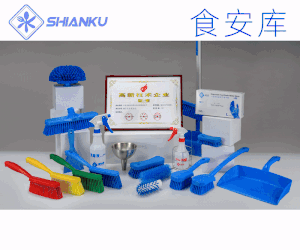食品伙伴網(wǎng)訊 2021年6月14日,據(jù)歐盟食品安全局(EFSA)消息,歐盟食品添加劑和調(diào)味劑小組( FAF )評(píng)估來(lái)自匙蓋假花耳(Dacryopinax spathularia)的長(zhǎng)鏈糖脂 (long-chain glycolipids )作為食品添加劑的安全性。
經(jīng)過(guò)評(píng)估,專(zhuān)家小組得出結(jié)論,認(rèn)為來(lái)自匙蓋假花耳的長(zhǎng)鏈糖脂不會(huì)對(duì)申請(qǐng)人提議的用途和使用水平產(chǎn)生安全問(wèn)題。部分原文報(bào)道如下:
The EFSA Panel on Food Additives and Flavourings (FAF) provides a scientific opinion on the safety of long-chain glycolipids from Dacryopinax spathularia (also called AM-1) as a food additive. AM-1 is a purified mixture of long-chain glycolipid congeners obtained by fermentation of the edible non-genetically modified fungus Dacryopinax spathularia. AM-1 glycolipids have very low oral bioavailability and overall available toxicology data do not demonstrate any adverse effects of the proposed food additive. Considering the available data set the Panel established an ADI of 10 mg/kg bw per day based on a range of NOAELs between 1,000 and 1,423 mg/kg bw per day (the highest doses tested), from the reproductive and a prenatal developmental toxicity studies in rats and 90-day studies in rat and dog. At the proposed maximum use levels, the exposure estimates ranged at the mean from 0.01 to 1.07 mg/kg bw per day and at the p95 from 0 to 3.1 mg/kg mg/kg bw per day. At the proposed typical use levels, the exposure estimates ranged at the mean from < 0.01 mg/kg bw per day to 0.23 mg/kg bw per day and at the p95 from 0 to 0.64 mg/kg bw per day. The Panel noted that the highest estimate of exposure of 3.1 mg/kg bw per day (in toddlers) is within the established ADI of 10 mg/kg bw per day and concluded that the exposure to long-chain glycolipids from Dacryopinax spathularia does not raise a safety concern at the uses and use levels proposed by the applicant.
本文由食品伙伴網(wǎng)食品資訊中心編輯,供網(wǎng)友參考,有任何疑問(wèn),請(qǐng)聯(lián)系news@foodmate.net。
相關(guān)政策解讀











 地區(qū):
地區(qū):






 魯公網(wǎng)安備 37060202000128號(hào)
魯公網(wǎng)安備 37060202000128號(hào)



